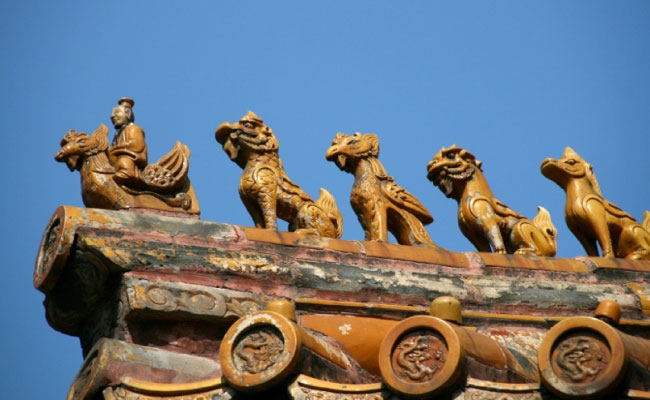This week, China’s central bank finally bit the bullet and cut the required reserve ratio by 50 basis points; and the manufacturing purchasing managers’ index hit a new low.
Long-Awaited Cut
The other shoe finally dropped on Wednesday evening, as People’s Bank of China (PBOC) finally cut banks’ required reserve ratio (RRR) by 50 basis points, the first time since May 2012. Many analysts had predicted such a cut in recent weeks, vowing more easing measures through the rest of the year.
In addition to the universal cut, PBOC will cut the RRR by another 50 basis points for qualified city banks that lend more to small businesses and 400 basis points for the Agricultural Development Bank.
Economists estimate that the cuts will loosen up between RMB 600 billion to RMB 900 billion for the Chinese economy, which comes in as a hedge against the liquidity squeeze that usually happens before the Chinese New Year. Chinese banks had been lobbying for the cut since PBOC lowered the benchmark interest rates in November, which economists say failed to bring down actual financing costs for firms.
The Last Straw
China’s central bank had been reluctant to cut the RRR in fear of unintended consequences such as a comeback in shadow banking or an overheating stock market. But recent readings of the economy showed that growth continued to slow down into the New Year despite a series of targeted easing measures by PBOC.
Last week, China’s official manufacturing purchasing managers’ index (PMI) for January came in as 49.8, a new low since September 2012. Non-manufacturing PMI also had its lowest reading in 12 months, suggesting slower growth in China’s service sector—a rare bright spot in China’s cooling economy.
“The RRR cut is a direct response to the manufacturing PMI falling below 50,” said Lu Zhengwei, Chief Economist at Industrial Bank, according to Economic Daily. “Similar situations happened in 2008 and 2012—it was either a RRR cut or [an] interest rate cut.”
The RMB Dilemma
Some analysts believe that China’s monetary easing will keep pushing the RMB down, a trend that may not please the PBOC itself.
The Chinese currency has been quickly depreciating against the US dollar since November last year, and the momentum has only been accelerating in the past few weeks. A cheaper RMB will benefit China’s exports, but drastic depreciation may hurt Beijing’s effort to internationalize the currency.
Therefore the PBOC is using its regulatory power to provide a bottom for the RMB—the bank publishes a guidance exchange rate between the US dollar and the RMB, allowing only a 4% flow band for the market.
According to Reuters, the spread between the spot rate and the guidance rate has widened to a record high in recent days, giving traders very little liberty to bid for cheaper RMB. While PBOC may succeed in the short term in battling the trend, analysts warn that too much anti-market intervention could affect transaction volume of the RMB, diminishing the currency’s market flexibility.
But many economists seem to agree that the RMB will only depreciate about 3% in 2015, and the currency will still be on its way up in the mid-to-long term. “The RMB will depreciate relative to the US dollar, but appreciate relative to the Euro” this year, said Li Wei, Professor of Economics at Cheung Kong Graduate School of Business. “But don’t anticipate a Russian-style currency meltdown”.
Market Disappoints
Following the RRR cut, the Shanghai Composite Index closed at 3,136.53 on Thursday, down 1.18% from the previous day.
The market’s reactions to similar easing varied in history, and the downturn suggests that investors are not over-optimistic about China’s monetary policy going forward, according to a blog posted by Hong Hao, Chief Strategist at Bank of Communications International.
“Upward sentiment is going to be short-lived,” Hong wrote. “The RRR cut does not equal large-scale easing… it’s only a countermeasure against the capital outflow and the shrinking of the foreign exchange reserve.”
PBOC uses funds for foreign exchange as an important way to increase money supply, but as the US dollar strengthened and attracted more capital back to the US, China’s outstanding funds dipped as well. In December, outstanding funds dropped RMB 129 billion from the previous month, the sharpest decline since late 2003.
More Investment?
On the fiscal policy end, local governments in China are preparing for more investment to boost growth. More than two dozen provinces have unveiled plans to build projects worth RMB 15 trillion in total, according to the Chinese media. But the problem could be that not all the plans will come true since officials lack both the funding and motivation to push them forward.
“Local governments have shown a clear sense of crisis amid an economic growth slowdown,” Liu Ligang, ANZ Bank’s head of Greater China economics told the South China Morning Post, predicting that local officials will be reluctant to expand investment aggressively amid President Xi Jinping’s anti-corruption campaign.
According to the analysis of China Securities News, China’s fixed-asset investment growth will slow to 14% in 2015, down from last year’s 16% and also a new low in 15 years.

















